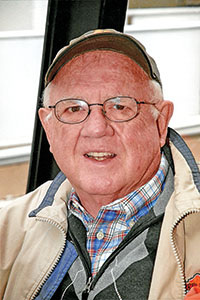As another new year gets underway, the American Farriers Journal editors thought it would be a good time to look into the crystal ball and make a few predictions as to what the equine footcare market may be like during the next 12 months.
- More consolidation among farrier industry equipment manufacturers could occur in 2016. In the past year, Will Lent and Bellota changed hands and Kerckhaert bought Diamond from Apex.
- With horse numbers stagnant in Great Britain, more British farrier suppliers will look to market their products in North America. An indicator is the increased number of British exhibitors who are part of the 2016 International Hoof-Care Summit trade show.
- The Department of Labor reinterpreted the Fair Labor Standards Act, which could have a far ranging impact on how farriers and their employees can continue to do business as independent contractors.
- A concern affecting many farriers is the state of a declining number of backyard horses. People have felt confident that there has been progress with an economic recovery, but it necessarily hasn’t affected middle class horse ownership. While the high-end horse market seems to be doing fine, whatever we view as the economic recovery has not benefited those who shoe sport horses at the amateur level.
- There are continued suspicions among farriers regarding hoof-care oversight with the Veterinary Equine Podiatry Group. These suspicions will only grow as the group continues to progress toward its goals.
- There continues to be a changing use with a few show horses. As an example, more Arabian gaited horses are moving to dressage instead of being entered in gaited horse competitions. Many of these farriers are still trimming and shoeing these horses for the same clients, but now for different uses and with different shoeing techniques.
- There will continue to be growing concerns about the accuracy and fairness of Internet information that footcare clients access.
- There will be a continued increase in the use of smartphones and tablets for farrier record keeping, appointment scheduling, billing, etc.
- There is a splintering within the barefoot trimming community, as a more educated subgroup is distancing itself from the barefoot fanatics who seem to have little scientific background for their beliefs. Members of these more educated groups aren’t necessarily against shoes. However, they won’t nail on shoes and may instead refer a case to a farrier who has the skills to shoe those horses.
- More of the folks who promote themselves as barefoot trimmers are starting to embrace the idea of the “protected” foot. The majority of these folks are using the latest adhesive technology and boots. As protected replaces barefoot, we’ll see the definition of “farrier” become cloudier in a fragmented industry.
- Farriers who work with specific breeds (such as Quarter Horses) will face increased shoeing difficulties as breeding has compromised hoof health. These horses are bred for other traits that result in poor feet.
- Increasing communication and collaboration between farrier, vet and owner/trainer/rider isn't necessarily new, but it seems to be emphasized more. It will become more necessary and a greatly appreciated part of equine health and livelihood.
- The hoof and feed supplements market will continue to grow and be viewed as a bigger part of the horse's overall health plan. The whole horse approach largely plays into the need to look at hoof health beyond just the trimming and shoeing which a farrier provides. Farriers are being asked more than ever before about dietary considerations.
- As pointed out in the recent AFJ farrier licensing series, there seems to be a greater push underway among rank-and-file farriers to “take control” of the trade.
- There seems to be a growing interest in developing new continuing education programs among American Farrier’s Association members.
- Interest in social media equine footcare groups is growing. Some devote themselves almost totally to farrier education, while others are more of an online social group.
- The illegal soring of Tennessee Walking Horses in the show ring is among the major equine welfare issues that still has not been resolved. Despite unprecedented bipartisan support by nearly 300 members in both houses of Congress, the PAST (Prevent All Soring Tactics Act) bill could not get out of committee and it died at the end of the last session. Congressional action in 2016 will hopefully solve this concern.
- The New York City carriage horse issue appears to be reaching a solution, although the decisions have little to do with animal welfare and won’t make carriage horse owners happy. It appears carriage horse rides will only be allowed in Central Park and that horse numbers will be trimmed significantly.
- Farriers are doing more forge work with keg shoes. It’s not simply shaping shoes, but spending more time on subtle needs such as back punching nail holes.
- More farrier hand tools are being introduced to the market, especially copycat models from overseas.
- Competition among suppliers in the hoof adhesive market continues to grow.
- An increase of farrier teams will blur the lines with apprenticeships due to economic factors and reduced horse populations in some areas, more qualified farriers may start working for others. You’ll see these helpers begin to work a few days each week with the lead farrier, allowing some lead farriers to acquire more clients. Quasi-multi-farrier practices will likely be created, even though the practitioners likely don’t view these as such.
- More of the larger veterinary practices will likely continue to add podiatry departments to take total control of the needs of their equine clients.
What Did We Miss?Got anything that we missed that is likely to happen in the equine footcare industry in 2016? Please post your thoughts in the comment field below. |








Post a comment
Report Abusive Comment